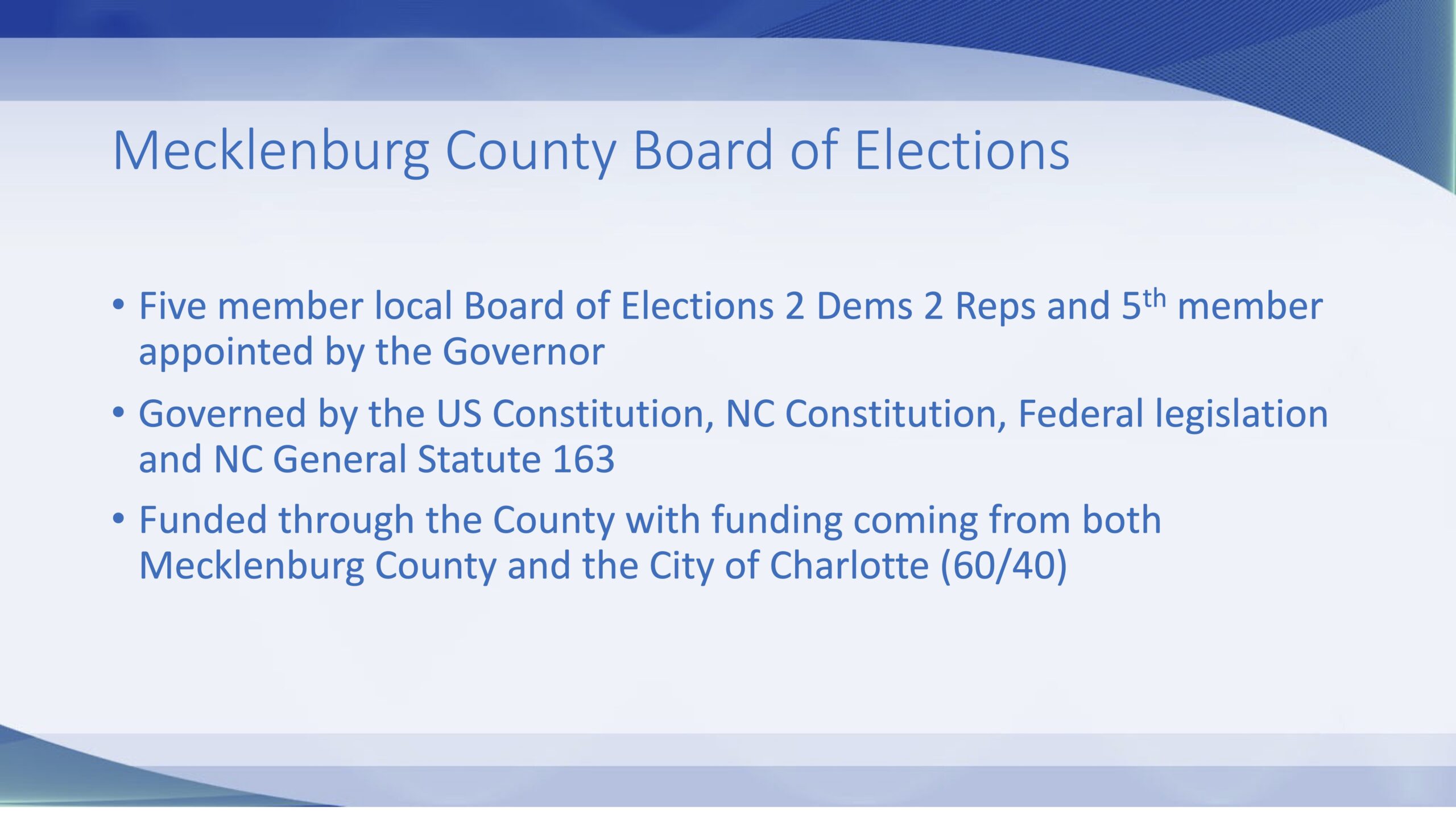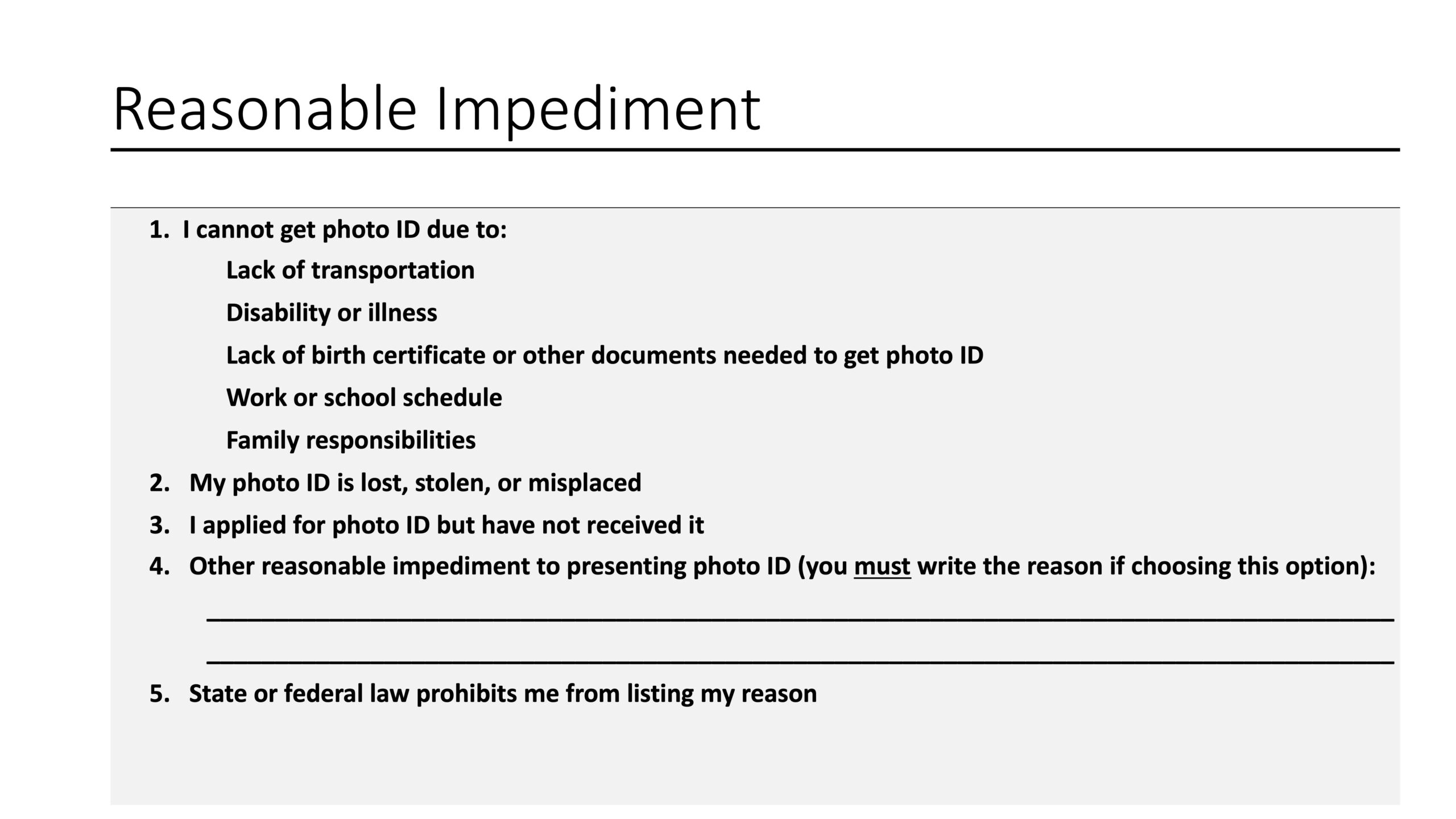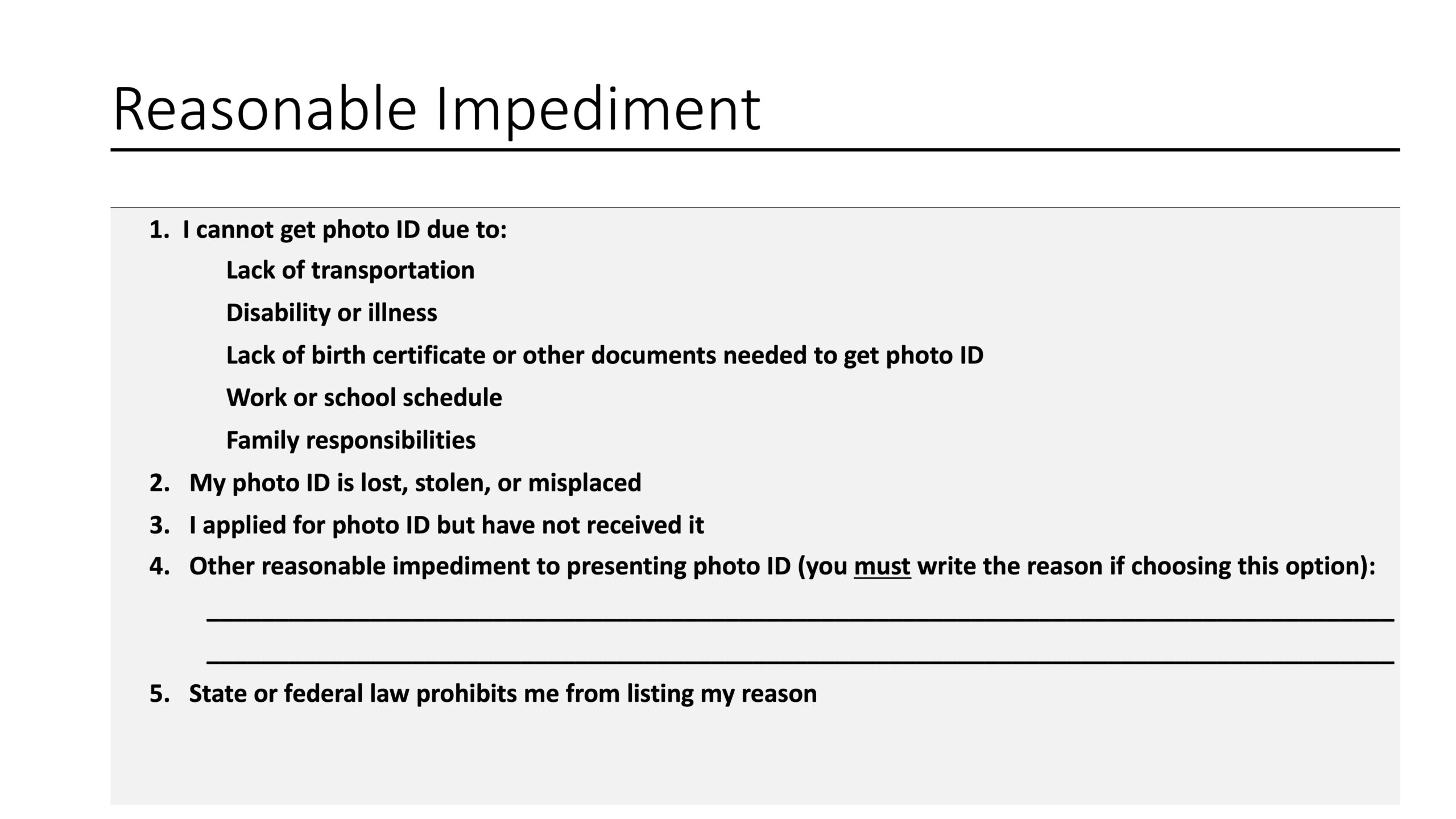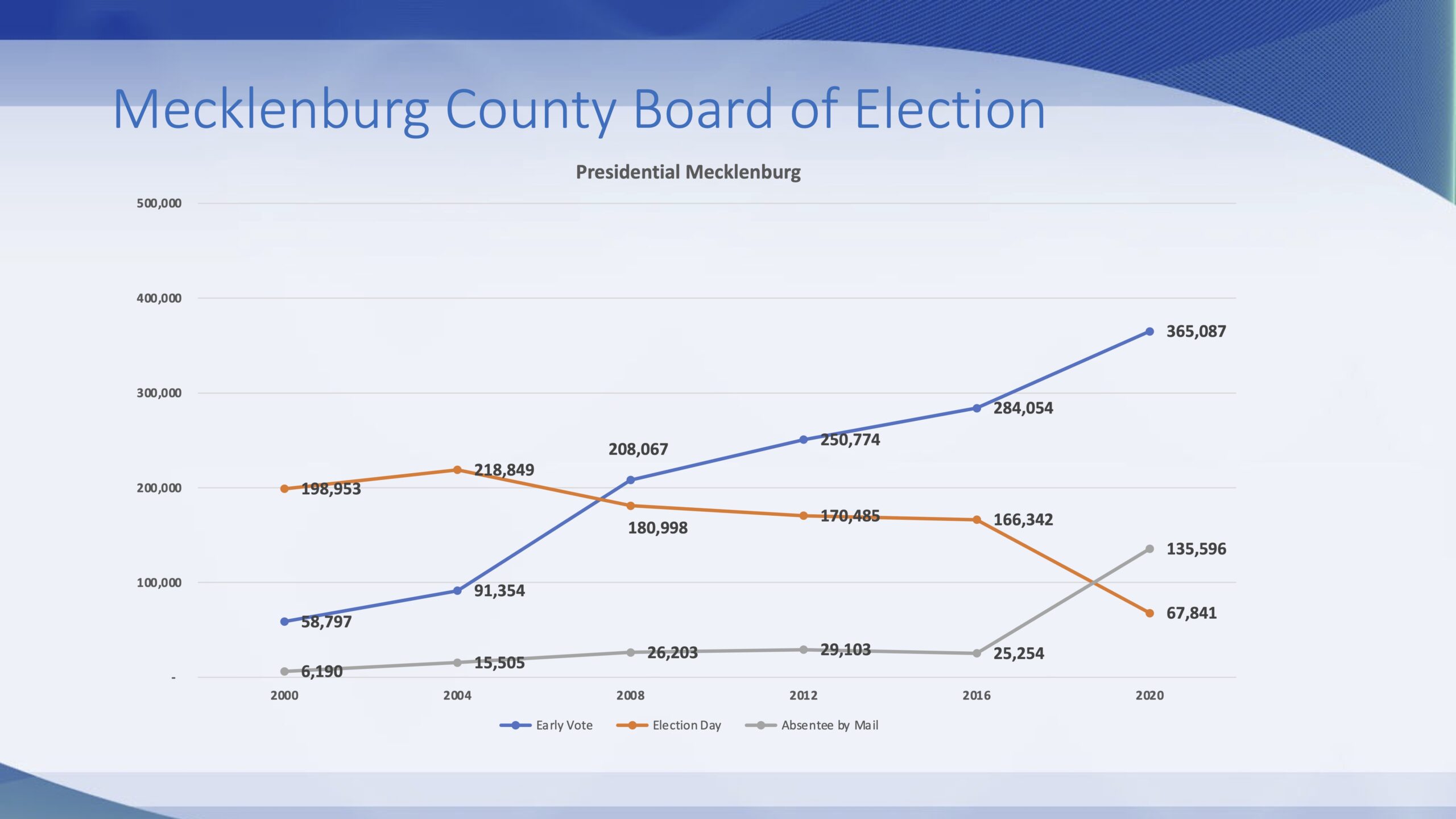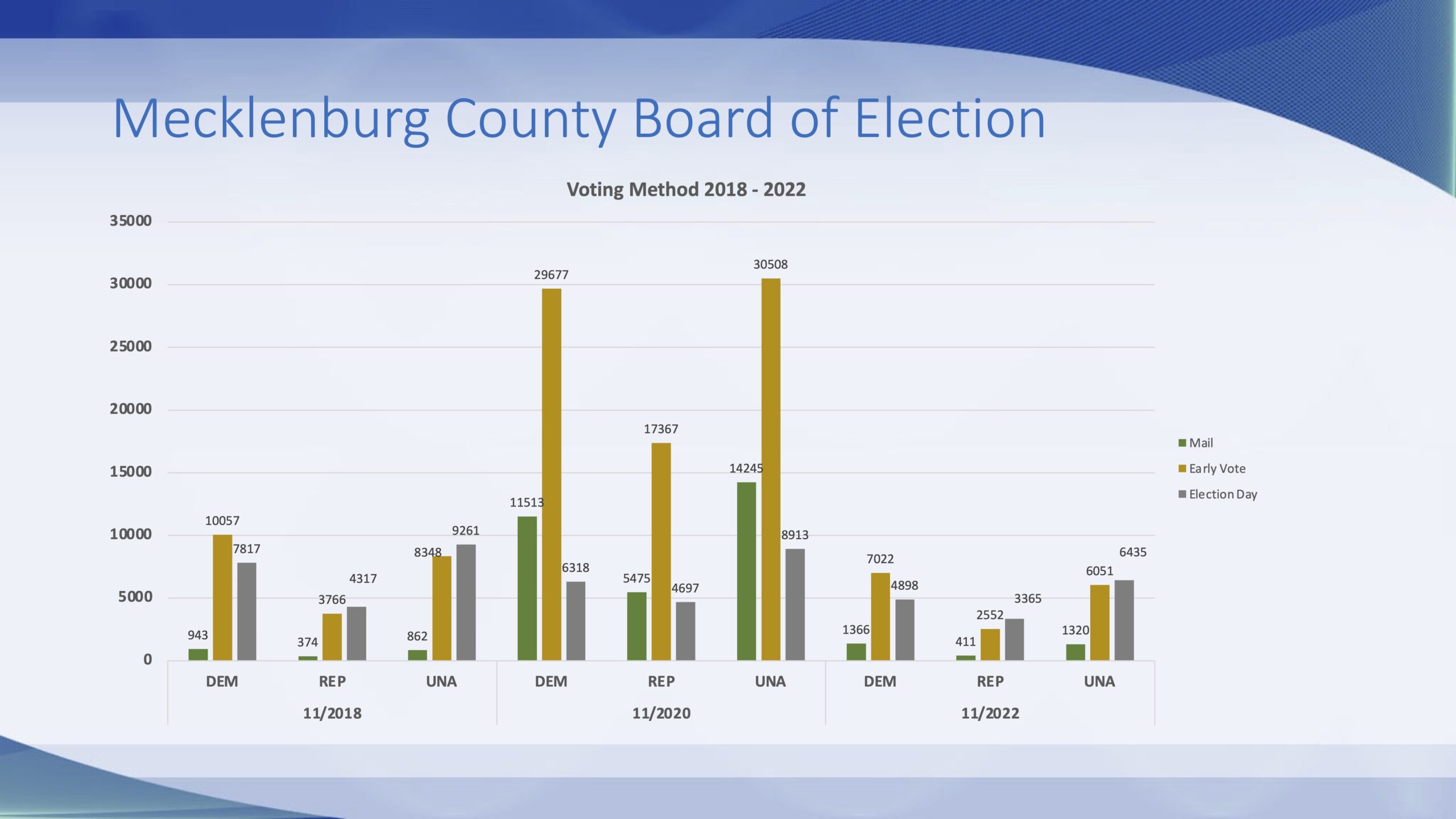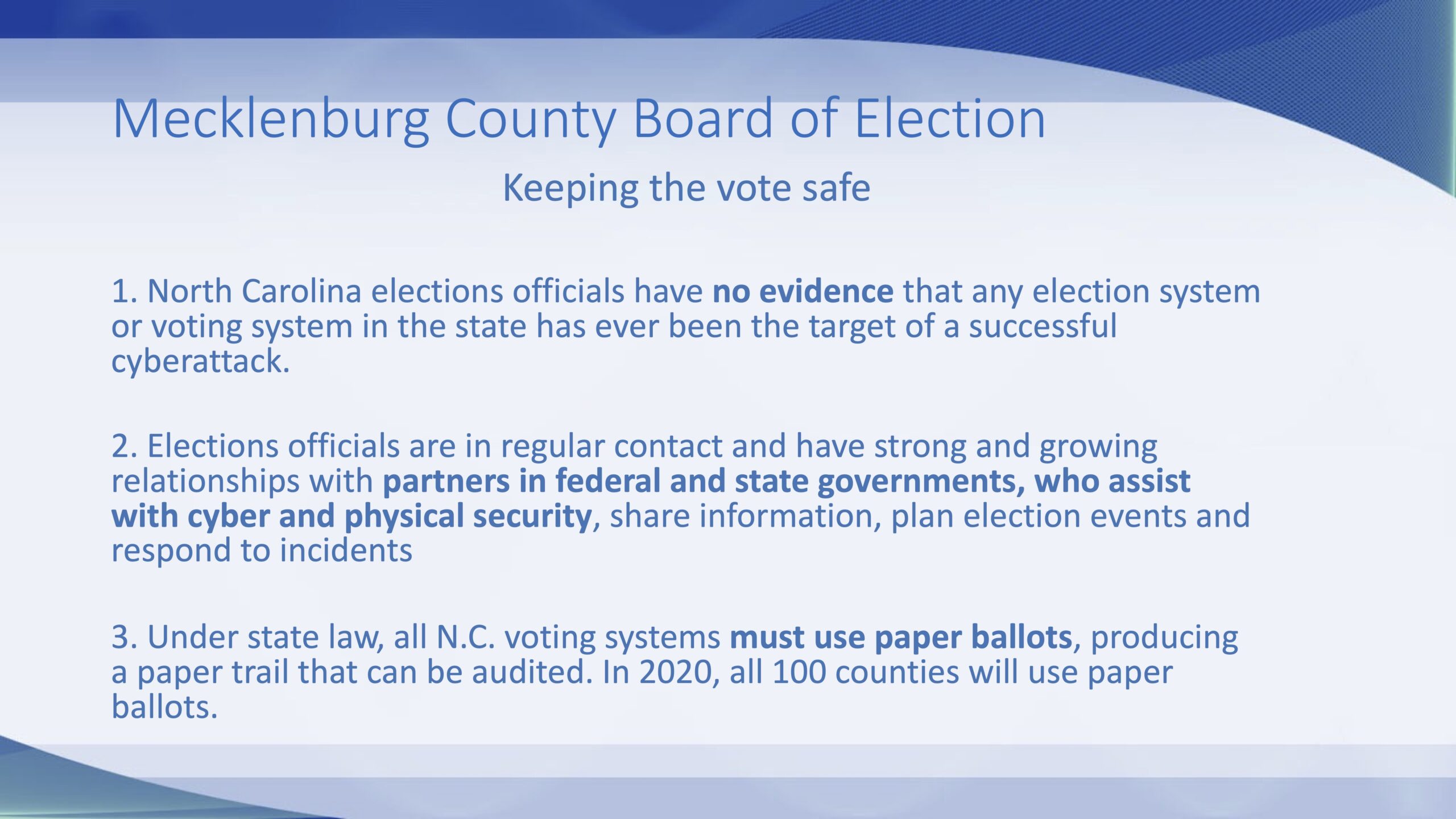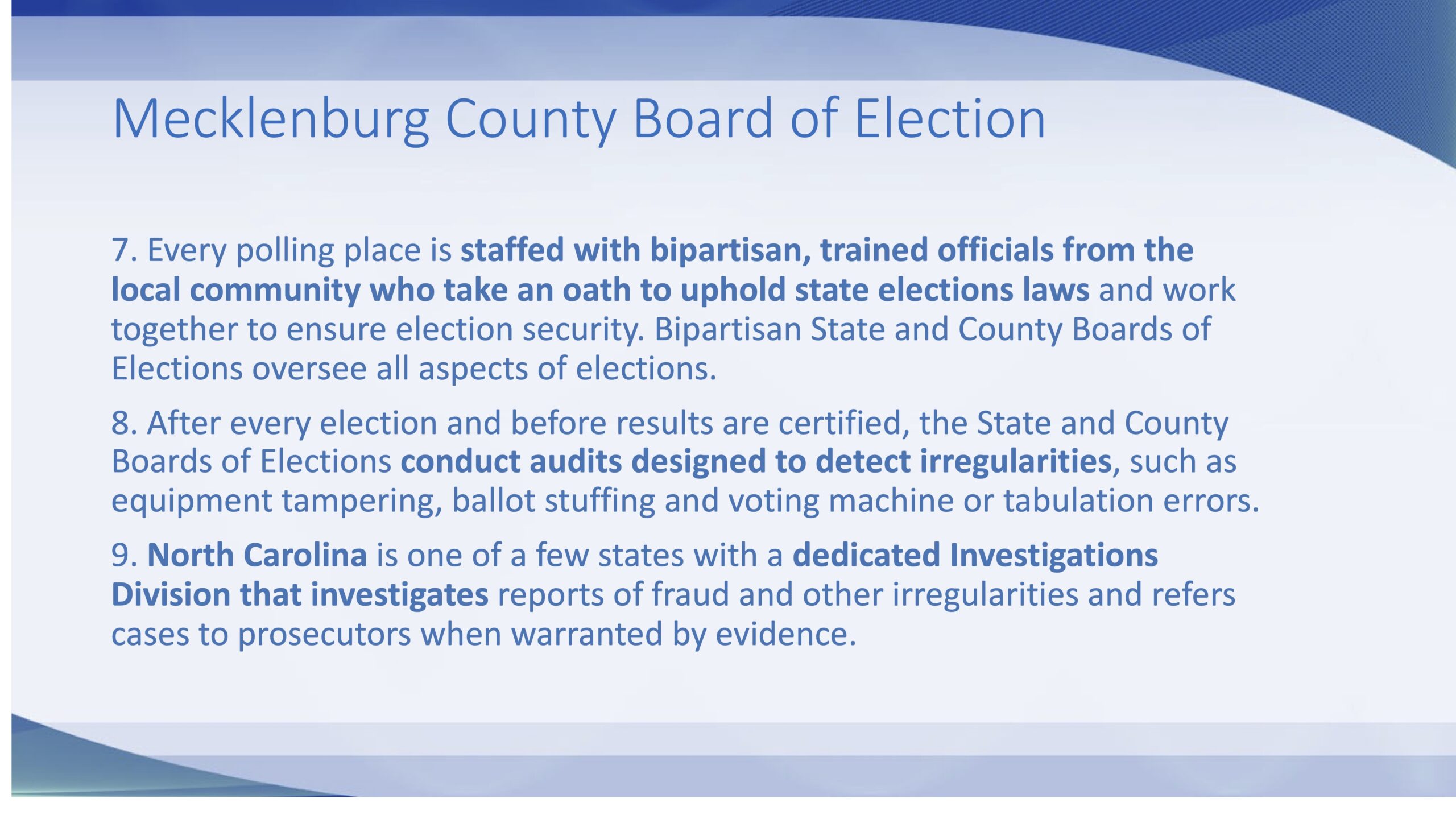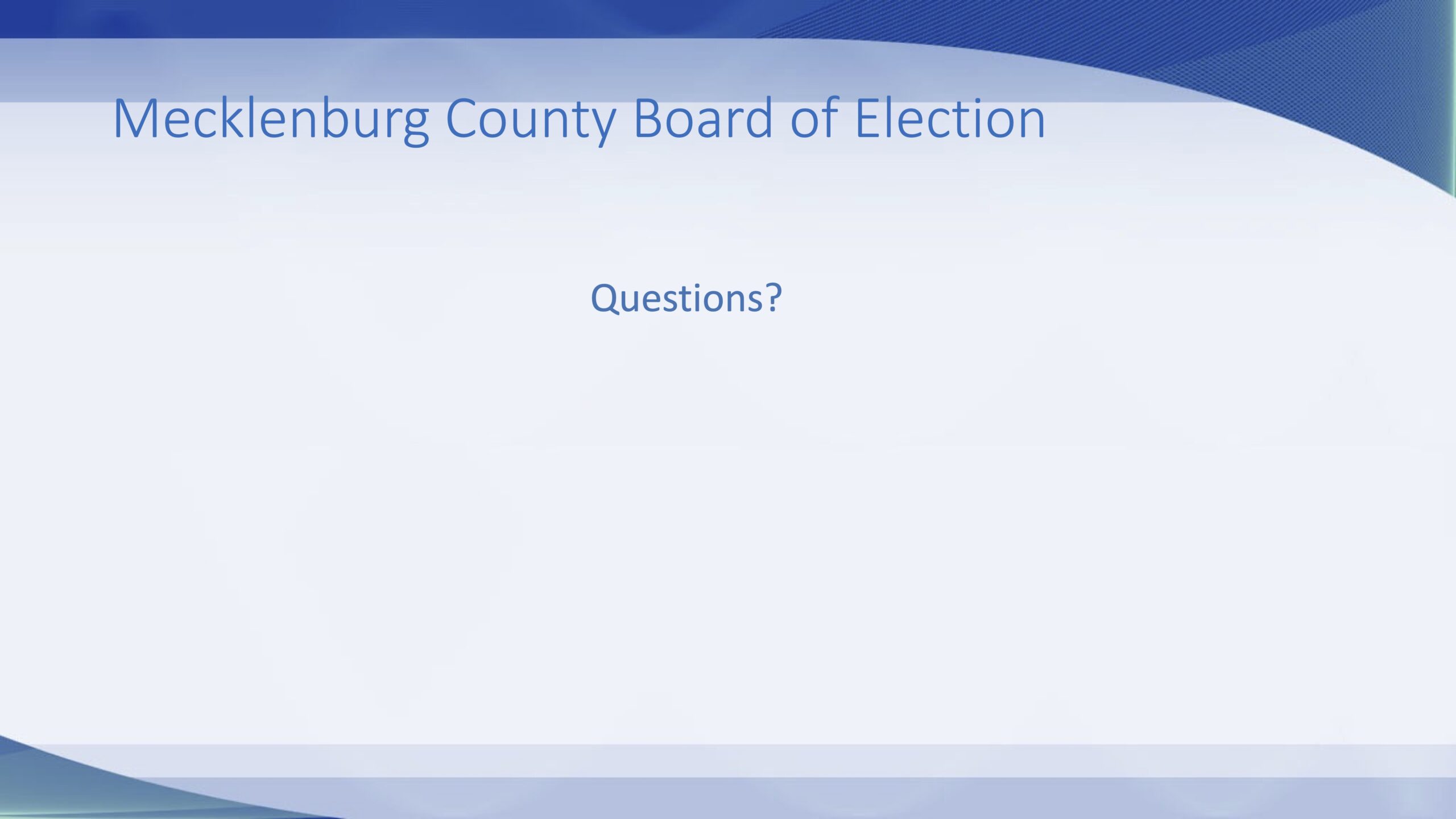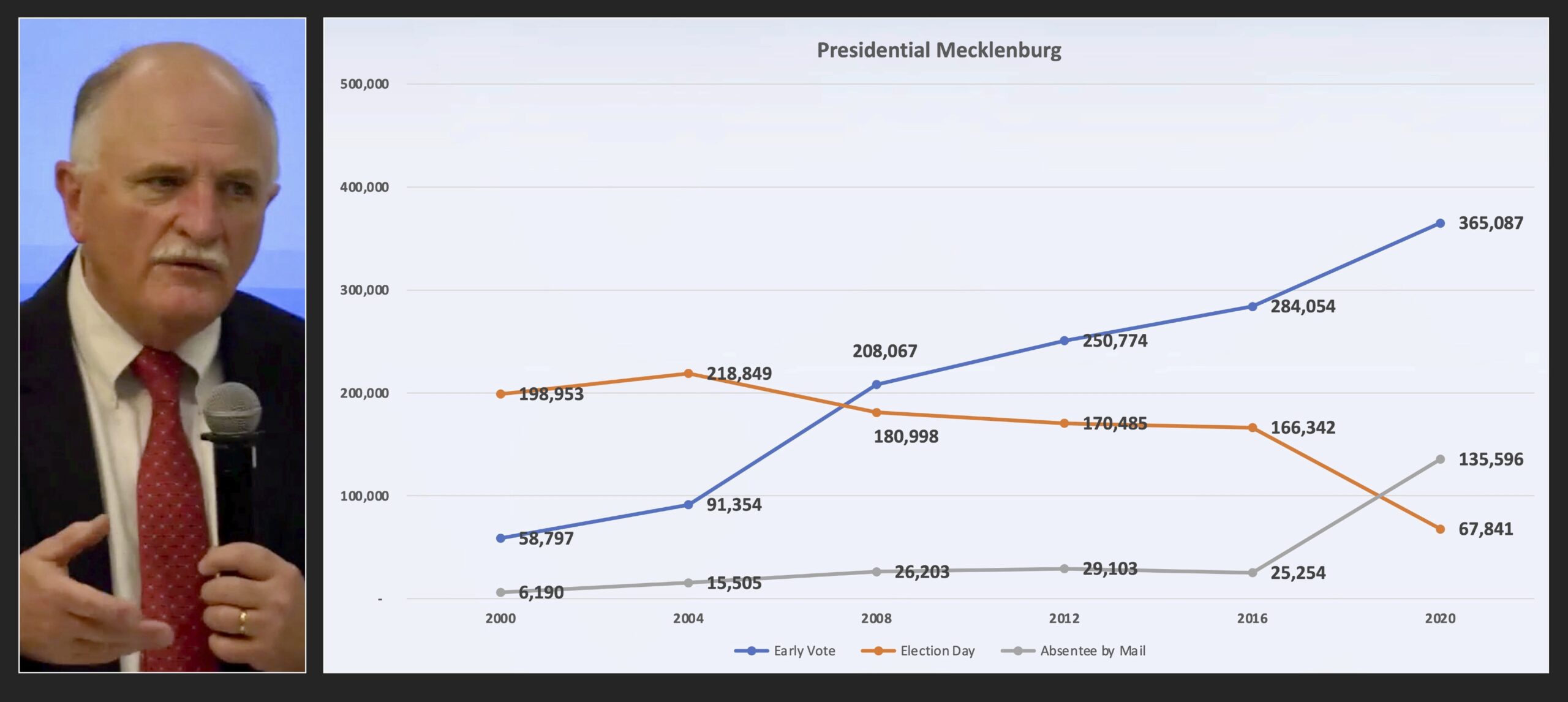
May 7, 2024; updated May 8
Michael Dickerson paces the floor as he talks, the way a brand-new public servant might. But he’s been Mecklenburg’s Elections Director since 1998. Take it as a sign that he never finishes fretting the details.
It was a week before a second primary involving just two Council of State contests and perhaps not too many more voters. But there was lots to fret about, and to tell Forum participants about.
Early voting sites. Photo ID requirements. Rules mandated by state legislation. Encrypted flashdrives that secure vote totals. And even as the livestream video bounced around the Internet, explanations of why voting machines print paper ballots to be kept for audits and recounts, and why the tabulation machines have no wi-fi and no Internet cords.
Dickerson peppers the patter about how the election-day system works with praise and comments about the people who make it all work. The 100-year-old who works an early-voting site. The precinct officials who by law may not leave the polling place for a roughly 15-hour day. And the hundreds of citizens who, before and during each Election Day, work for peanuts to make democracy work.
Dickerson clearly loves his work. But his duty is to make the existing system work fairly and seamlessly and transparently. It was not a day to ask: What electoral system would be so compelling – even among the young adults at a UNCC precinct who were 98% absent for the March primary – that nearly everyone eligible would cast an informed ballot?
But participation in voting is a bulwark of democracy. Those who listen to Dickerson describe the current system might have some reform suggestions to share with their legislative representatives.
Dickerson spoke from slides. The file includes a few repeat slides, as he would return to a previous slide during his presentation. The slides may be downloaded as a PDF file here, and are displayed on this page below the video.
Tuesday evening, an online viewer wrote in, “What does a person without an ID need to bring to the Election Office to secure an ID? The website information was circular.” Dickerson’s reply:
“If you are a registered voter, you complete a Photo ID form with your name, address, last 4 digits of your Social Security number and date of birth and we take your picture and hand you your photo ID. No other identification needed.
“If you are a new registration, you complete a voter registration application and the Photo ID form, we take your picture and once your voter registration application is processed and verified, we mail you your photo ID.”
– Steve Johnston

